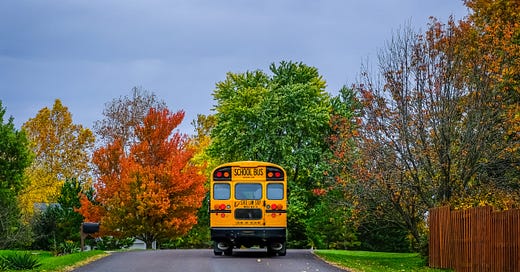COVID Devastated Education. This Is a Chance for Renewal.
Can America’s failing schools become a unifying national mission?
The numbers are rolling in now about how much ground our kids have lost academically due to COVID-19 and they are very bad. The National Assessment of Educational Progress, known informally as “the nation’s report card,” has released the results of its latest large survey of fourth and eighth graders in reading and math. Reading scores declined in half of the states in the country, and in math, well, as Education Week put it, the 2022 NAEP scores showed the “biggest drop in . . . performance in 4th and 8th grades since the testing program began in 1990,” resulting in two decades’ worth of progress being nearly wiped out.
Only 26 percent of eighth graders were found to be proficient in math and 31 percent were proficient in reading. Among fourth graders, the numbers were a bit better for math—36 percent proficient—and about the same (33 percent) for reading.
It isn’t as if America’s schools were going gangbusters before the pandemic. The Programme for International Student Assessment tests 15 year-olds in dozens of countries around the world and has consistently found that American students lag behind other advanced, industrialized countries. In 2015, for example, American high schoolers performed significantly worse than students in Canada, Poland, Japan, and 11 other nations in reading, and considerably below students in 35 other nations (including Russia, Italy, and Vietnam) in math. Results for science knowledge were similar to the reading scores, with Americans behind students in 17 other nations.
We’ve been flailing about our inadequate schools for decades now, ever since “A Nation at Risk” was issued in 1983 by the National Commission on Excellence in Education. Despite massive amounts of per-pupil spending (far more than the OECD average), America’s students are not where they ought to be—which is at the very top of international rankings.
The new numbers about learning loss due to COVID will doubtless become fodder for political battles about how red versus blue states handled school closures. But the data don’t offer up the kind of simple lessons partisans will be seeking. Not all states had uniform policies—some school districts remained closed longer than others. And even in states known for caution, perhaps excessive caution, like California, test scores tracked closely with those of Florida, where the schools reopened much faster.
Of course, school is about more than test scores, and it’s possible that students kept out of classrooms longer than necessary suffered emotional and developmental problems as well as academic losses, as a number of surveys have suggested.
As always, school closings hurt poor students the most, and for obvious reasons. Wealthier families can afford to spend time and effort supplementing their children’s education, and often have two parents available. A poor, single parent working full-time is not going to have as much discretionary time to look over their child’s shoulder as they work out their math homework on a laptop—if they even have a laptop. Among poorly-performing fourth graders in the NAEP survey, only 50 percent said they had ready access to a computer at all times during the pandemic, compared with 80 percent of high-performing students. And if a single parent has more than one child, the problem only compounds. In some poor regions of this country, the schools are just dismal. In Detroit, where about half of students are poor, 6 percent of fourth graders were proficient in math before the pandemic. And this year, only 3 percent are. Three percent. That is a catastrophic failure for those kids.
If President Biden were wise, he’d convene a big, showy White House conference on the education deficit. He should propose a national volunteer initiative to get retirees (including but not limited to retired teachers), business people, parents, younger people with free time, and anyone else with knowledge to impart to offer one or two nights a week to tutor kids in their neighborhoods. We already have the facilities—schools and libraries are everywhere. And we have a very generous populace. About one in four adults—63 million Americans—spends some time every year volunteering. If we had a big national push to get people to tutor students in need, we might just get a big response. More than that, we might also accomplish a collateral goal. When people work together on a project, they become less polarized. One might imagine Republicans and Democrats meeting on Tuesday and Thursday nights at the library to teach math or reading to kids and, if not becoming friends, at least not hating one another. And if it worked, it might persist beyond the current emergency.
Perhaps this is too optimistic. Maybe our country cannot cooperate on anything. Maybe the volunteers won’t show up. But what’s the harm? This isn’t a big government program. There will be no big federal outlay to raise inflation concerns. There’s already a nonprofit that has been created to jump start the process. It will be an opportunity to make a concrete difference in the lives of kids in your region. It will be as simple as asking not what your country can do for you, but what you can do for your country.





